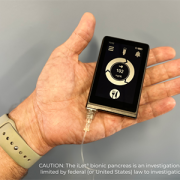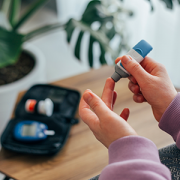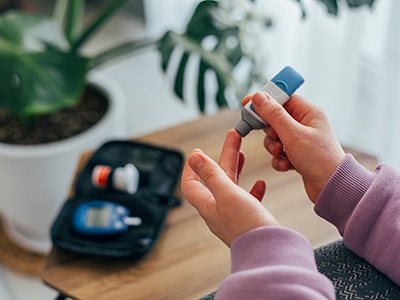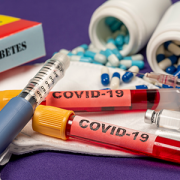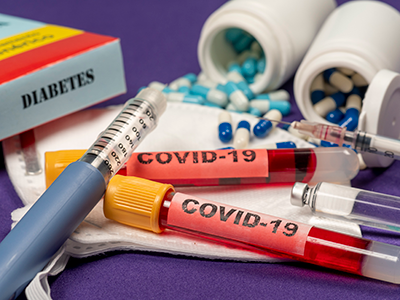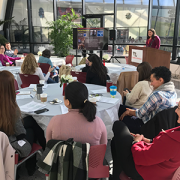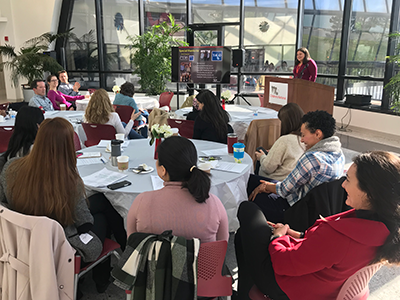Multicenter trial finds bionic pancreas improves Type 1 diabetes management
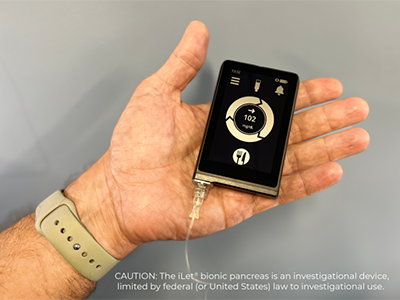
Compared to other available artificial pancreas technologies, the bionic pancreas requires less user input and provides more automation because the device’s algorithms continually adjust insulin doses automatically.
A device known as a bionic pancreas, which uses next-generation technology to automatically deliver insulin, was more effective at maintaining blood glucose levels within normal range than standard-of-care management among people with Type 1 diabetes, a new multicenter clinical trial found.
The trial, conducted partly at Children’s National Hospital, was primarily funded by the National Institute of Diabetes and Digestive and Kidney Diseases (NIDDK), part of the National Institutes of Health, and published in the New England Journal of Medicine.
Automated insulin delivery systems – also called artificial pancreas or closed-loop control systems – track a person’s blood glucose levels using a continuous glucose monitor and automatically deliver the hormone insulin using a pump. These systems replace reliance on insulin delivery by multiple daily injections, pumps without automation and testing glucose levels using more labor-intensive systems, such as fingersticks.
“A diagnosis of Type 1 diabetes can be overwhelming for a child and their family,” said Fran Cogen, M.D., C.D.C.E.S., principal investigator at Children’s National and director of the Childhood and Adolescent Diabetes Program. “It is extremely important to monitor and manage glucose levels throughout the day to prevent serious complications like eye problems, kidney disease, heart and blood vessel disease. This new technology may give patients and families a sense of relief from some of the daily stressors that come with the diagnosis of this chronic disease.”
Compared to other available artificial pancreas technologies, the bionic pancreas requires less user input and provides more automation because the device’s algorithms continually adjust insulin doses automatically. Users of the bionic pancreas also do not have to count carbohydrates, nor initiate doses of insulin to correct for high blood glucose. In addition, healthcare providers do not need to make periodic adjustments to the device’s settings.
The 13-week trial, conducted at Children’s National and 15 other U.S. clinical sites, enrolled 326 participants ages 6 to 79 years who had Type 1 diabetes and had been using insulin for at least one year. Participants were randomly assigned to either a treatment group using the bionic pancreas device or a standard-of-care control group using their personal pre-study insulin delivery method.
The study found:
- In participants using the bionic pancreas, glycated hemoglobin improved from 7.9% to 7.3%, yet remained unchanged among the standard-of-care control group.
- The bionic pancreas group participants spent 11% more time within the targeted blood glucose range compared to the control group.
- Results were similar in youth and adult participants.
- Improvements in blood glucose control were greatest among participants who had higher blood glucose levels at the beginning of the study.
Hyperglycemia caused by equipment problems was the most frequently reported adverse event in the bionic pancreas group. The number of mild hypoglycemia events and frequency of severe hypoglycemia were not different in the two groups.
“The results of this study will bring hope to patients, families and providers that there are technologies being created to help ease the burden of diabetes management and keep glucose levels more stable,” said Kimberly Boucher, M.S.H.S., B.S.N., R.N., clinical research manager of Endocrinology at Children’s National.
The study is one of several pivotal trials funded by NIDDK to advance artificial pancreas technology and look at factors including safety, efficacy, user-friendliness, physical and emotional health of participants, and cost. To date, these trials have provided the important safety and efficacy data needed for regulatory review and licensure to make the technology commercially available. The Jaeb Center for Health Research in Tampa, Florida, served as coordinating center.
Funding for the study was provided by NIDDK grant 1UC4DK108612 to Boston University, by an Investigator-Initiated Study award from Novo Nordisk, and by Beta Bionics, Inc., which also provided the experimental bionic pancreas devices used in the study. Insulin and some supplies were donated by Novo Nordisk, Eli Lilly, Dexcom and Ascensia Diabetes Care. Partial support for the development of the experimental bionic pancreas device was provided by NIDDK SBIR grant 1R44DK120234 to Beta Bionics, Inc.
You can read the full study, Multicenter, Randomized Trial of a Bionic Pancreas in Type 1 Diabetes, in the New England Journal of Medicine.


